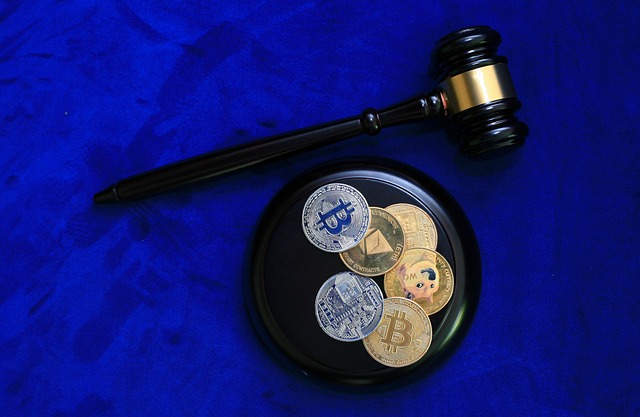Crypto wallet security is paramount for investors, as it safeguards digital assets and facilitates crypto tax reporting. Hardware wallets offer the highest security through isolated private key storage, while software and mobile options require enhanced security measures like multi-signature authentication and two-factor verification. Encryption and regular backups are vital components to protect against unauthorized access and hardware failures. Crypto tax reporting requires understanding taxable events, calculating gains/losses, managing diverse crypto taxes, and maintaining meticulous records. Utilizing wallets with built-in tax tools and consulting specialized professionals can simplify the process while ensuring compliance for investors navigating this dynamic landscape.
In the ever-evolving landscape of cryptocurrency, securing your digital assets is paramount. This comprehensive guide explores the multifaceted approach to safeguarding your crypto wallets, delving into types, security measures, and best practices. From understanding encryption and backup’s pivotal roles to navigating the intricate process of crypto tax reporting for investors, this article equips you with the knowledge needed to protect and manage your digital investments effectively.
- Understanding Cryptocurrency Wallets: Types and Security Measures
- Best Practices for Securing Your Crypto Assets
- The Role of Encryption and Backup in Wallet Safety
- Tax Reporting with Cryptocurrencies: A Comprehensive Guide for Investors
Understanding Cryptocurrency Wallets: Types and Security Measures

Cryptocurrency wallets are digital storage spaces designed to secure your crypto assets, much like traditional banking accounts hold your fiat currency. They facilitate transactions and allow users to manage their digital currencies effectively. There are various types of crypto wallets, each offering unique features and security levels.
Hardware wallets are often considered the most secure due to their offline nature. These physical devices store private keys in an isolated environment, protecting against online threats. Software wallets, on the other hand, exist as applications or desktop programs, providing a more accessible but potentially vulnerable option. Mobile crypto wallets balance convenience and security, utilizing encrypted software to safeguard funds while enabling easy access through smartphones. For investors, understanding these wallet types is crucial for implementing effective security measures, especially when considering the growing importance of crypto tax reporting.
Best Practices for Securing Your Crypto Assets

Securing your cryptocurrency assets is paramount to protect your investment and ensure compliance with crypto tax reporting for investors. Best practices include using reputable wallets that offer advanced security features like multi-signature authentication, encryption, and cold storage options. Enable two-factor authentication (2FA) for an extra layer of protection. Keep software up-to-date to patch vulnerabilities, and be wary of phishing attempts or suspicious activities.
Store private keys securely, avoiding online backups that could expose them to potential threats. Diversify your portfolio across multiple wallets and exchanges to minimize risk. Regularly audit your transactions and monitor wallet activity for any unauthorized access. Back up your crypto holdings in a secure offline location as an additional safeguard.
The Role of Encryption and Backup in Wallet Safety

In the realm of cryptocurrency wallet security, encryption and backup are the sturdy walls and robust doors that safeguard digital assets from unauthorized access. Encryption, like a complex code, transforms sensitive data into an unreadable format, ensuring only those with the correct key can decode it. This critical layer of protection prevents malicious actors from stealing or manipulating private keys, which are the gateway to cryptocurrency ownership.
Backup, on the other hand, acts as a safety net against potential hardware failures or human error. Just as investors meticulously manage their crypto tax reporting to stay compliant, they must equally prioritize backing up their wallets. Secure backups ensure that even if a device is lost or compromised, the ability to recover funds remains intact. This dual-pronged approach—encryption for immediate protection and backup for long-term security—is essential in navigating the ever-evolving landscape of digital currencies.
Tax Reporting with Cryptocurrencies: A Comprehensive Guide for Investors

For crypto investors, understanding crypto tax reporting is crucial as it goes hand in hand with maintaining robust security practices. As the cryptocurrency landscape continues to evolve, so do the tax regulations surrounding it. Investors must stay informed about their tax obligations, which can vary significantly based on the type of crypto asset held and its purpose. Keeping accurate records of all transactions is essential; this includes logging purchases, sales, trades, and any other changes in portfolio value.
A comprehensive guide to crypto tax reporting for investors should cover several key areas: identifying taxable events, calculating capital gains or losses, understanding different types of crypto taxes (like transaction taxes, mining taxes, or staking rewards), and keeping records organized. Utilizing reputable crypto wallets that offer built-in tax reporting tools can streamline the process. Additionally, consulting with a tax professional who specializes in cryptocurrency is advisable to ensure compliance with local laws and maximize potential tax advantages or deductions.
In conclusion, securing your cryptocurrency wallet is paramount to protect your digital assets. By understanding different wallet types and implementing best practices like multi-factor authentication and regular backups, you can mitigate risks. Additionally, crypto tax reporting is an essential aspect of responsible investing, ensuring compliance with regulations. Adhering to these guidelines will help investors navigate the digital landscape safely and efficiently.
